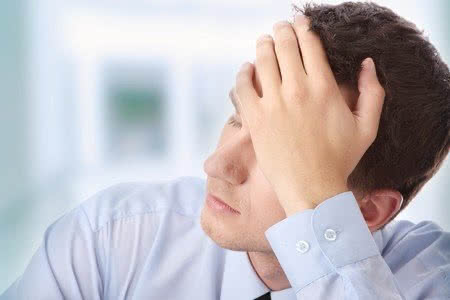How To Tell The Differences Between Healthy And Unhealthy Anxiety

It isn’t easy to tell the difference between healthy and unhealthy anxiety. Few emotions conjure more definitional confusion than anxiety.
Websters defines anxiety as, “apprehensive uneasiness or nervousness usually over an impending or anticipated ill: a state of being anxious.” A rare few of us hasn’t felt this normal human emotion, so ubiquitous it it’s experience.
But anxiety is also a class of psychopathology driving more than 25 diagnoses that span nearly 100 pages in the Diagnostic and Statistical Manual (DSM5), the diagnostic measuring tool for psychological disorders.
So what is it? Healthy or unhealthy?
Like to so many constructed dichotomies, the answer to this one is: it depends.
Anxiety can be both healthy and unhealthy. And telling the difference largely depends on how it impacts you, what you think about it, and what you do with it.
Measuring anxiety across these 3 variables can help you determine when anxiety is healthy, and when it isn’t.
- How does anxiety impact you?
Conventional thought has held that it is the amount and severity of anxiety that determines whether it is healthy or not. Too much anxiety is generally unhealthy, whereas some anxiety can be helpful, and even healthy. But assessing anxiety’s healthiness has more to do with its impact on your life, than its severity.
Indeed the DSM5 uses a threshold rather than severity model to determine pathology: when symptoms start cause impairment in your life and functioning, symptoms are considered disordered.
Impact, rather than severity, is an important key to evaluating anxiety’s role in your life.
- How do you understand anxiety?
As we learn more about anxiety and stress, our understanding is evolving. Science is now suggesting symptoms’ negative impact is significantly determined by how we think about it.
Biologically aligned with stress, the science of anxiety very often overlaps with the science of stress, especially with regard to animal studies. A notable recent study of the health effects of stress has demonstrated the amount of stress matters less than how you view it and what you do with it.
These data suggest important implications for anxiety: how we think about it and what we do with it may matter more than how much we have of it.
If you think your anxiety is unhealthy, it probably is. And not just because you’re super self- aware, but because your fear of it makes it so. Fearing our anxiety tends to escalate it, whereas thinking positively about anxiety can make it useful.
With what we know about anxiety, it is not a stretch to say that how we think about it can determine whether it is healthy or unhealthy.
- What do you do with your anxiety?
This is perhaps the most important part – the doing. How do you use your anxiety, and what do you do with it?
Anxiety can alert you to the things you care about, and fuel your motivation to act, or anxiety can alert you to fears beyond your control that fuel rumination, withdrawal, and more fear.
The difference between these two types of anxiety lies in how you think about it, and ultimately what you do with it.
According to new research, anxious people may be more alert to taking action, “able to react swiftly and efficiently when faced with dangerous situations.” When we don’t use anxiety to solve problems, but instead let it fester and scare us into feeling more fear and anxiety, we turn it against itself, and transform it into something harmful.
Knowing that anxiety naturally primes us to problem-solve and take protective action can help us channel its energy into solutions.
Your answers to these three questions will hopefully help you determine how anxiety is operating in your life, and whether it is healthy. How we think about anxiety, and what we do with it, are so critical to how it impacts us.
If you aren’t happy with how anxiety is operating in your life, notice what isn’t working, and use your anxiety to fuel problem-solving. Your first action step just might be changing your thinking about it, or perhaps changing what you do with it.
The good news is that taking a close look at your anxiety – healthy or unhealthy – is the first step in taking control of it, and ultimately using it to your advantage.